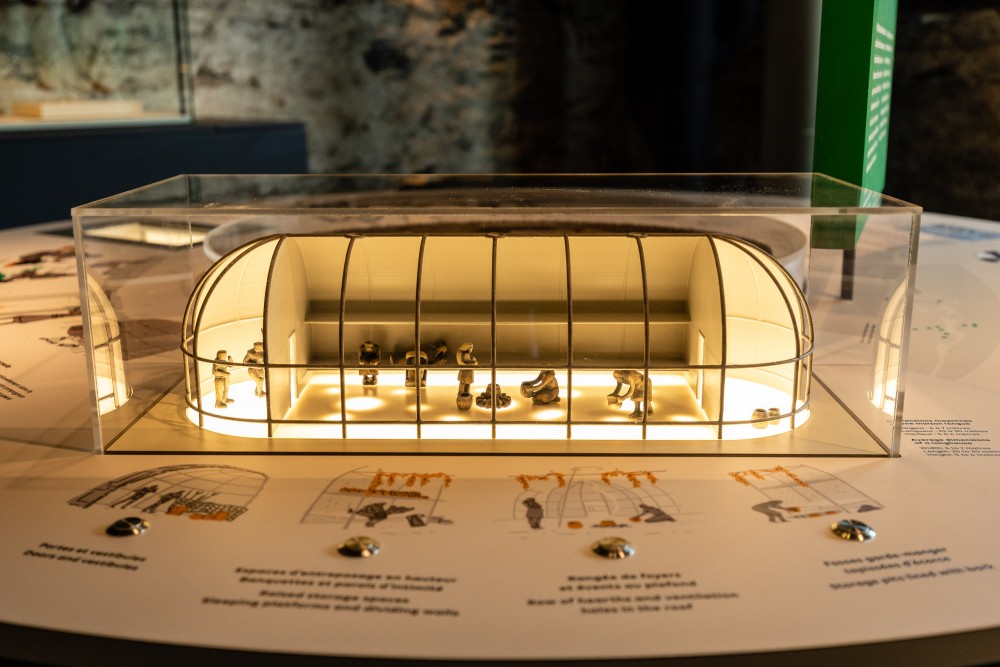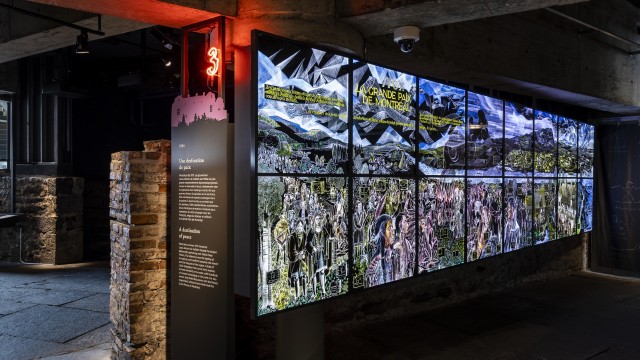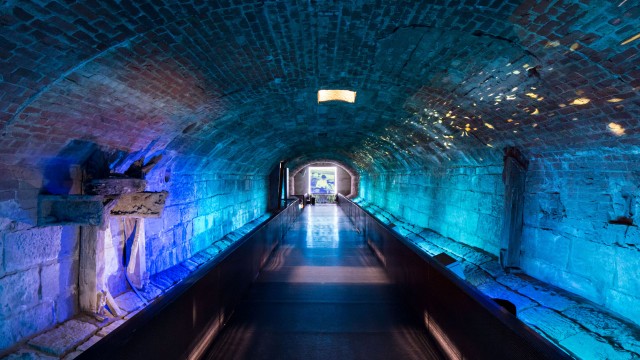Permanent exhibition
Crossroads Montréal
The Crossroads Montréal adventure begins beneath the Éperon, Pointe-à-Callière’s main building. The archaeological site, which notably includes the foundations of the Royal Insurance building (1861-1951), tells the story of Montréal—from its days as a stop frequented by hunter-gatherers some 4,500 years ago to the development of urban Old Montréal as we know it today. This one-of-a-kind site in North America bears witness to the comings-and-goings and meetings of several Indigenous and European peoples. The many artefacts, biofacts, and architectural remains found during archaeological digs reveal the evolution of this exceptional site.
In a completely redesigned exhibition space, visitors can familiarize themselves with the languages of indigenous Anicinape, Kanien’kehá, and Wendat communities as they immerse themselves in the spirit of the site, before going on to explore the lifestyle of the St. Lawrence Iroquoians. They can take some time to reflect on the stirring remains of Ville-Marie’s first Catholic cemetery (1643) and meet the key figures—and exceptional negotiators—who played a role in the Great Peace of 1701.
Get to know the Indigenous contributors involved in the development of the work Ancestral Memories of the Island: a digital fire around which you can gather to listen to three stories in the languages of the Indigenous Anishinaabe, Kanien'kehá, and Wendat communities.
The path continues on to the 18th century, where a surprising “Google Map” awaits visitors. A historical adventure rooted in 21st century technology allows people to visit the Montréal of 1708, on foot or on horseback. A magnificent map of Montréal in 1708 is reproduced on an interactive touchscreen, giving visitors a chance to learn about the city’s inhabitants and their occupations. It provides an exceptional and never-before-seen look at the way in which the little French city was organized. Lastly, with the arrival of the British, the city’s development accelerates, as we witness the construction of the Royal Insurance building, whose shape inspired the architecture of the Éperon, the Museum’s current building.

The pathway through the archaeological remains is punctuated with contemporary indigenous artwork and art installations, as well as digital and interactive resources to guide visitors as they explore the site.
An exhibition showcasing the latest scientific discoveries
The exhibition is the result of recent historical and archaeological discoveries. An advisory committee made up of members of Indigenous communities, archaeologists, historians, and anthropologists guided the Museum through the development of its exhibition content.



